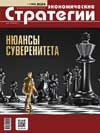About economic competitiveness of Small Modular Reactor with accident tolerant fuel. Part 1
DOI: 10.33917/mic-4.123.2025.62-69
The method of analytical calculation of the microeconomic criteria of investment efficiency into PWR Small Modular Reactor is presented as depending on the engineering, physical and economic parameters of the reactor. This method is convenient for multi-variant preliminary searches of acceptable criteria for SMR competitiveness. As a prototype SMR reactor is being considered RITM-200N with a period of 6 years of continuous work (before fuel overload) and the use of tolerant fuels, accident-resistant, consisting of metal ceramic composition in a chromium-nickel alloy shell (42XHM). The results of calculations of the relationship between engineering and physical parameters of the reactor, electricity costs and the payback period for investments are given.
References:
1. The white book of nuclear energy. A closed NFC with fast reactors / Edited by prof. Е.О. Adamov. М.: Publishing house АО «NIKIET», 2020. 502 p.
2. Alekseev P.N. et al. Two-component nuclear power system with thermal and fast reactors in a closed nuclear fuel cycle / Edited by N.N. Ponomarev-Stepnjy. М.: Tekhnosfera, 2016.160 p.
3. Energy, Electricity and Nuclear Power Estimates for the Period up to 2050. 2024 Edition. IAEA-RDS-1/44 ISBN 978-92-0-123424-7. 148 p.
4. Abramova A.V., Kharitonov V.V. Analytical modeling of scenarios for the sustainable development of global two-component nuclear energy. Part 1. Scenarios with thermal reactors.Atomic energy, 2024;137(3-4)131-137.
5. The Path to a New Era for Nuclear Energy/ International Energy Agency (IEA). 2025. 99 p.
6. Small modular reactors: challenges and opportunities. NEA No. 7560, 2021. 56 p.
7. Advances in Small Modular Reactor Technology Developments. A Supplement to: IAEA Advanced Reactors Information System (ARIS). 2020 Edition. IAEA, September 2020. 354 p.
8. Semenov E. V., Kharitonov V.V. Microeconomics of improving the safety of nuclear power plants based on using of accident tolerant fuel. Microeconomics. 2021;5(100):49-62.
9. Semenov E. V., Kharitonov V.V. Analytical dependence of the burnup on the enrichment of prospective fuel and the parameters of the fuel campaign of reactors. Atomic energy. 2023;135(1-2):77-83.
10. Low nuclear power station: a new direction of energy development. V. 2 / Edited by RAS academician А. А. Sarkisov. М.: Akadem-Print, 2015. 387 p.
11. Dragunov Yu. G. et al. Approaches to development of SMR based on a gas-cooled reactor. Atomic Energy. 2019;126(5):243-248.
12. Kudinov V.V. В. Low-power nuclear power plants in NIKIET. «Small nuclear power industry: Yesterday, Today, Tomorrow (Retrospective and Prospects)». NIKIET, ROSATOM, 2022. https://nsrus.ru/files/ks131022/
13.Smirnova L.S., Korolev S.A. Factor analysis for integrated approach to economic of Small nuclear power plant projects. Atomic energy. 2024;137(1-2):3-14.
14. World Nuclear Association. Small Nuclear Power Reactors. Small Nuclear Power Reactors – World Nuclear Association. URL: world-nuclear.org






